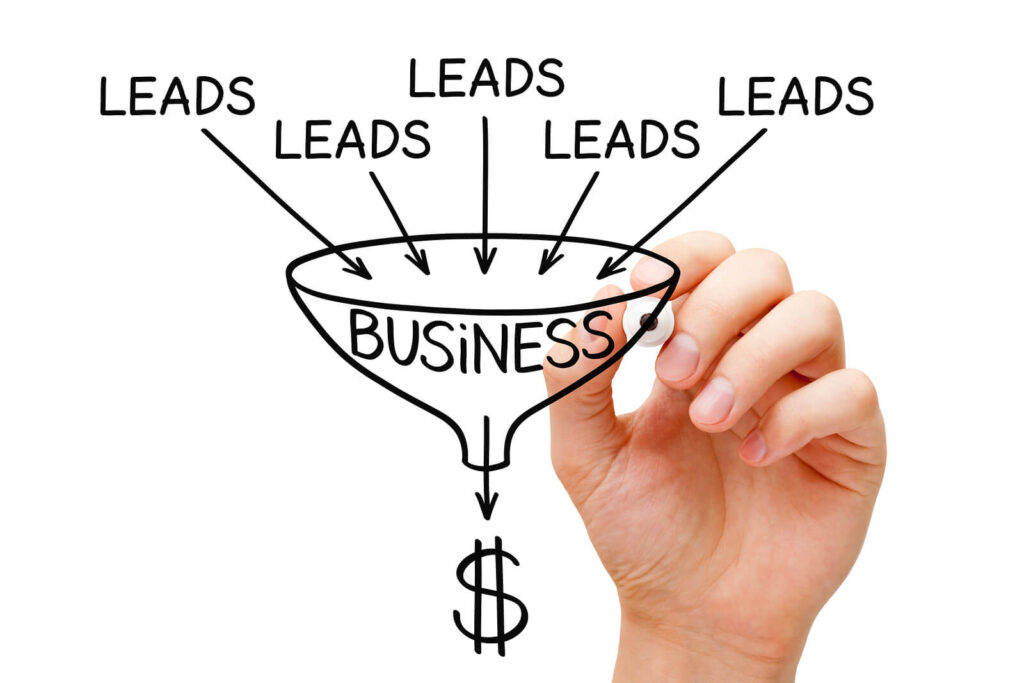In the quest for SaaS marketing success, it’s all about understanding the customer’s journey and delivering value at each stage. With HubSpot’s impressive toolkit at your disposal, the journey from prospect to delighted customer can be a smooth and personalized one. Ready to unravel the secrets of leveraging customer insights, capturing quality leads, tailoring communication via workflows, and optimizing for expansion revenue? Let’s dive into the deep end of SaaS marketing, where the art of understanding your customer meets the science of using your technology stack effectively.

Charting the Customer’s Path with HubSpot Tools
Grasping the journey of your ideal customers is the bedrock of a potent HubSpot strategy. Prior to deploying any tools, it’s smart to delve into your audience’s psyche. Chart their hurdles, key needs, and favored content styles during each lifecycle phase. This knowledge empowers you to set up the inbound methodology and adjust tools to mirror the actual progression of prospects into customers.
With the compass of audience research, you can pair specific HubSpot features to each stage of the customer’s journey. Deliver the information they crave in the formats they like exactly when they require it. Content propositions, calls-to-action, and lead flows are directly linked to their motivations at each stage. The outcome is a sleek, seamless journey that propels them through your sales funnel. They receive personalized value, while you harvest qualified leads.
It requires upfront commitment to chart the journey accurately. But this lays the groundwork for SaaS marketing and sales triumph in the future. Invest the time to understand your customers, gain insight into their process, and tailor your HubSpot tools accordingly. When the software aligns with the buying journey, you pave a path of least resistance toward revenue expansion.
Decoding the Customer’s Journey with HubSpot Tools
Embarking on an effective HubSpot strategy starts with a bit of detective work – mapping out your target audience’s path from initial curiosity to loyal customer. This essential first move shapes your inbound approach, steers your tool setup within HubSpot, and empowers you to craft content that gently guides leads through each phase.
Begin by sketching out your ideal customer profile (ICP). Record their demographics, frequent challenges, and motivations for seeking your type of SaaS product. Also, sketch out the information your leads require at different stages – from preliminary research to final vendor choice. Surveys, interviews, and persona development exercises can reveal these insights.
Then, chart the typical buying journey for your ICP, marking milestones such as:
• Initial Problem Recognition – What situations or experiences led them to identify the need for a solution?
• Information Gathering – What information are they hunting for when they start researching their options? Case studies? Pricing and feature comparisons? User reviews? Concentrate on the content types that shape their early impressions.
• Solution Exploration – What signs suggest they’re ready to delve into specific solutions and start engaging with providers? Downloading trial software? Attending a demo? Focus on capturing these middle-funnel signals in HubSpot.
• Vendor Evaluation – What selection criteria are crucial as they compare competing solutions? Customize later-stage nurturing content around addressing specific objections.
• Final Selection – How do they ultimately decide which vendor to go with? Ensure you provide the reassurances needed for them to visualize success with your SaaS.
With this customer’s journey map as your compass, you can tailor your HubSpot tools and workflows to match – delivering the right messaging needed at each stage to nurture leads into becoming delighted customers. Invest the time upfront to reveal those insights for an inbound strategy that’s in sync with how your customers truly make their purchase decisions

Maximizing Lead Capture with HubSpot: A Playful Guide
Unlocking the secret to SaaS marketing success is all about capturing and nurturing top-notch leads. HubSpot is your trusty sidekick, offering a plethora of effective tools to lure in your dream customers, gauge their interest, and gently guide them towards becoming joyful subscribers. But remember, the magic lies in the careful configuration of these tools, tailored to your buyer personas and their unique customer journey.
Let’s dive into some best practices for setting up lead flows, forms, live chat, and calls-to-action. Our mission? To seize contacts at the golden moment, deliver immediate value, and keep nurturing them until they blossom into customers.
Think of lead flows as the backbone of the inbound methodology. They empower you to map out each stage of the buyer’s journey and link specific actions to propel contacts through each phase. For instance, you might set up a flow where visiting 3 blog posts nudges a lead to advance to the “awareness” stage.

Lead flows then trigger automated tasks like dispatching a relevant email sequence or assigning a sales rep. By setting clear criteria for advancing contacts based on their engagement, you can prioritize and personalize follow-ups to seal more deals.
Subscription forms are another key player in the capture game. Pop-up, landing page, and blog forms should gather crucial data to pinpoint promising leads. This includes capturing role, industry, company size, pain points and more. Effective forms also offer instant value through discounts or exclusive content in return for contacts signing up.
Setting up live chat and callback request options on high-traffic pages allows for real-time lead capture. Design chat flows to ask strategic questions that uncover visitor challenges. This helps determine if they are a match for your offerings. Callbacks also enable immediate lead engagement which boosts conversion rates.
Finally, calls-to-action (CTAs) are essential across channels. Create CTAs that resonate with contacts at different funnel stages. For example, “Download Buyer’s Guide” for the awareness stage, “View Demo” for the consideration stage, and “Start Free Trial” for the decision stage. Place buttons, links and banners with compelling CTAs in visible areas on site pages and emails.
In conclusion, adopt a strategic approach to deploying lead flows, forms, live chat, CTAs and more in HubSpot. Align them with buyer journey stages and configure them to reveal lead interests. This empowers you to deliver a personalized buying experience. Leads will transform into delighted customers at higher rates through thoughtful automation and personalization.
Using Workflows to Personalize and Segment for SaaS Buyers
Workflows are a potent tool in HubSpot, enabling the automation of personalized messaging on a large scale. By creating workflows based on the attributes and behaviors of leads, SaaS companies can craft content that directly addresses the stage of the buyer’s journey that contacts are in.
Consider this: you could set up a workflow that activates when a lead from a target persona accesses a pricing page. Use this action to enroll them in an email nurture track that provides content on evaluating SaaS ROI. Go a step further by adding a condition that checks for existing app usage data – if present, include case studies demonstrating expansion revenue in the nurture track. If there’s no usage data, shift the focus to the benefits of the starter tier.
Workflows can also help segment contacts for sales representatives. Establish a workflow rule that assigns tier 1 leads showing strong intent signals to the SQL queue. Direct new leads with minimal activity to SDRs for top-of-funnel nurturing. This way, reps can immediately identify the most promising conversations to prioritize.
Regardless of the use case, effective workflows adhere to three essential steps:
1. Pinpoint the behavior or attribute of the subscriber that defines the segment
2. Determine the associated follow-up action to enhance relevancy
3. Establish a structured sequence of touches to guide leads down the funnel
By adhering to this framework and leveraging the robust workflow functionality within HubSpot, SaaS companies can ensure the right message reaches the right contact at the right time, ultimately leading to higher conversion rates.
Optimizing HubSpot Tools for Expansion Revenue
Scaling profitably is a crucial goal for SaaS companies, and it goes beyond just acquiring new customers. By smartly using the tools available in HubSpot, you can guide your subscribers to naturally increase their spending over time. This growth, achieved through upsells and cross-sells, then fuels the flywheel to attract even more customers.
Start by developing a tiered lifecycle stage strategy that categorizes customers based on their subscription level and how long they’ve been with you. For instance, you could label users who have been subscribed for 0-3 months as “Onboarding”, 4-6 months as “Engaged”, 7-12 months as “Retained” and 12+ months as “Loyal”. You can further divide these groups by the type of product package they have. This strategy lays the groundwork for personalized interactions in the future.
Once you’ve defined your lifecycle stages, you can create targeted campaigns to encourage customers to move up to higher tiers. For your Engaged subscribers, consider enrolling them in a “Product Spotlight” email series that showcases the unique features of higher tiers. Pair this with in-app messages that explain the extra benefits they would gain from an upgrade. First, show them the value, then suggest the next logical step to access more.
Pop-ups can also be used to suggest package upgrades at the right moments. For instance, when your Loyal single-product subscribers return to your app after a break, welcome them back with a pop-up that introduces new integrated products available at higher tiers. Offer a two-week free trial so they can try out these features without any risk. Given their familiarity with your product, they’ll quickly understand the value proposition.
Client testimonials can also be a powerful tool when promoting expanded offerings. For your Retained subscribers, consider using a testimonial pop-up featuring a quote from a similar customer explaining how upgrading boosted their success. This peer perspective can often be more persuasive than anything you say directly as the provider.
With your tiered lifecycles clearly defined, you can guide subscribers along an expansion pathway using HubSpot’s comprehensive tools. Personalized email campaigns, in-app messaging, pop-ups, and testimonials all play a part in educating customers and encouraging upgrades. Experiment with these techniques to find the most effective sequences for boosting expansion revenue. But remember, the customer should feel guided, not pushed. Meet their needs, and the revenue will naturally follow.


Unifying Your SaaS Tech Stack
What’s the secret to a full-circle understanding of your customers as a SaaS marketer? Integration is the answer.
By connecting HubSpot with other systems, you gain a more comprehensive insight into the customer journey.
CRM systems like Salesforce are treasure troves of information about prospects and customers. Two-way integration allows for the sharing of crucial data between HubSpot and your CRM. Whether it’s contacts, companies, or deals, syncing these key elements eliminates the need for manual duplication and ensures consistency. Gone are the days of switching between systems to update information.
Support platforms such as Zendesk record important interactions after a sale. By channeling this customer support data into HubSpot, marketers can gain a deeper understanding of customer pain points, inform product improvements, and create relevant nurturing content.
Subscription billing systems allow for the management of the entire customer lifecycle within HubSpot. Usage data from platforms like Chargebee reveals the level of product adoption across different segments. This enables marketers to design targeted campaigns to increase engagement.
Linking HubSpot to your martech stack provides a holistic view of the customer, assisting marketers in creating more pertinent messaging and ensuring continuity across systems. And the outcome? Seamless customer experiences.
Harnessing the power of HubSpot tools will empower SaaS businesses to chart and decode the customer journey, maximize lead capture, personalize interactions, optimize expansion revenue, and unify their tech stack. This strategic approach leads to seamless customer experiences, guiding them from curious prospects to loyal customers, thus driving sustainable growth.




Permalink
Permalink